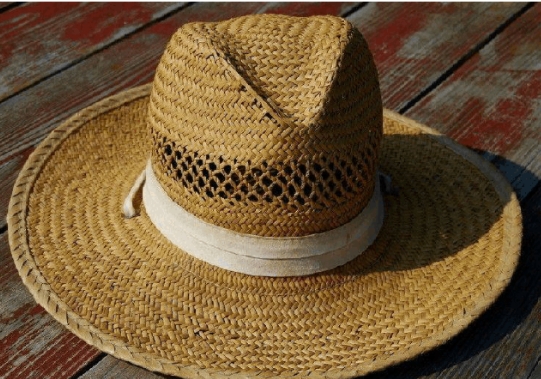
The first step to making a good straw hat is choosing the suitable material. Today, I will bring you 28 materials for custom straw hats. Take a look!
Straw braided strips are hand-braided with wheat stalks and then processed into caps with specifications as 1.5cm, 1.2cm, 1.0 cm, 0.8cm, 0.6-0.7cm, etc. Thin and high-end braids, the thinner the braid, the higher the price.
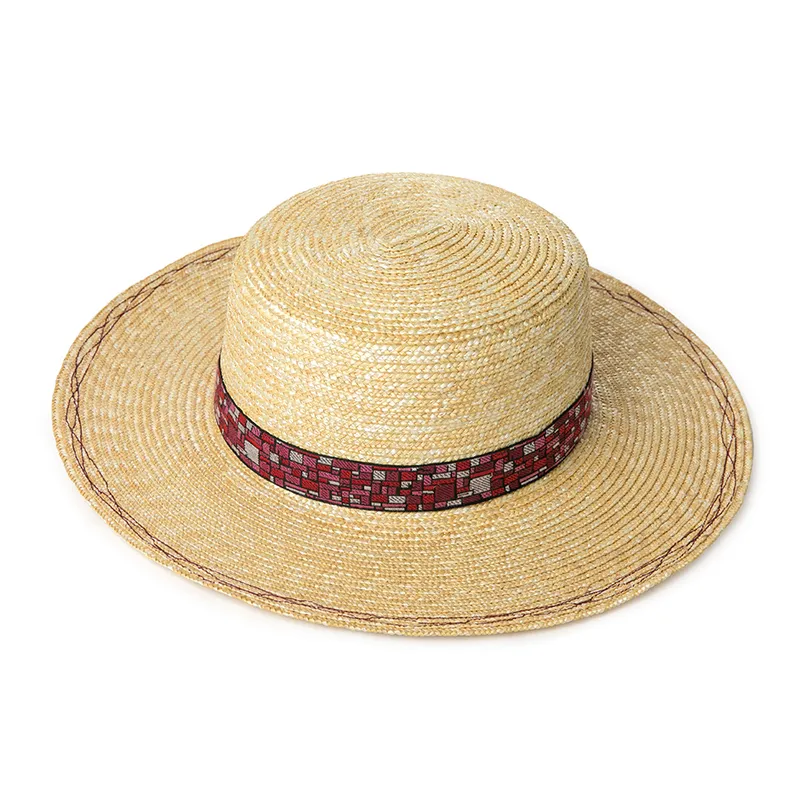
Also known as Triglia, or stone grass, once found in Lu Chu Sanbu Village, Gangshan Tan Di Yang, WuJia Mei, etc. Party.
Grow in clusters; rhizomes cross the soil, erect stalks, triangular, and up to one meter tall. Inflorescence apex, three bracts in the inflorescence, the leaves at the base of the stem, hard to be found. Three bracts at the bottom of the inflorescence; the whole inflorescence has about 5 to 10 radiant branches of varying length, with about 5 to 12 spikes on each radiating branch.

Angelica Hand-braided Hat Angelica Rope-braided Hat Angelica Hand-hooked Bucket Hat
Toquilla mainly grows in Ecuador (also found in several very small regions of Peru and Colombia). The leaves contain slender fibers, lightweight, strong and tough, and easy to bend. They are excellent materials for weaving straw hats. Coupled with good weaving technology, the Panama straw hats are not only breathable and light, but also not easy to break down, and are deeply loved by the public. In 2012, it was selected into the intangible cultural heritage list by UNESCO.
Many other materials have been tried to produce alternatives that can also be made by certain machines, but none has better air permeability than real panama straw hats.
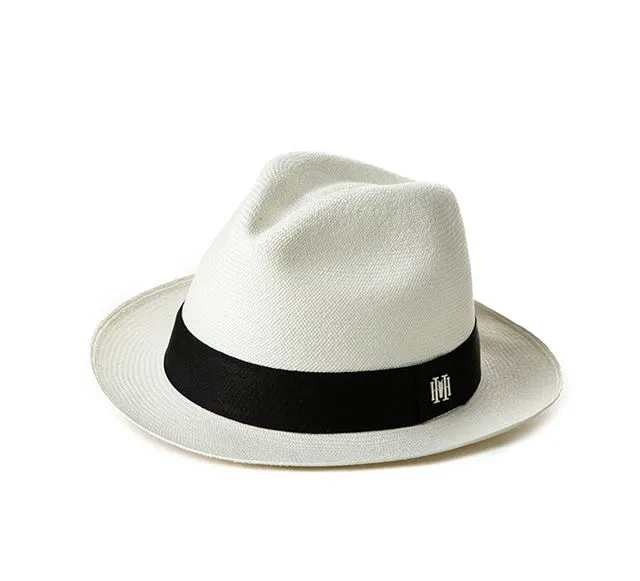
The raw materials are imported from Madagascar and can be dyed. They are handwoven, crocheted, braided, and woven.
It is expensive and is recognized by the international market for its strong toughness and extraordinary character. The grass is smooth on the outside and refreshing on the inside. It is not afraid of water and is extremely firm. Therefore, it is also regarded as a love grass, which means that people should treat love consistently and unswervingly.
The grass has been used to weave a variety of ornaments rich in ethnic characteristics. In addition, tying a raffia wishing rope on the longevity pine can pray for the safety of the family, the well-being of the parents, and the health of the children. Raffia has many loyal fans at home and abroad.
Raffia hand-knitted bucket hat is a bit expensive, the price varied from 30-90 according to the with and shape, the thinner the higher price. 1cm 3 lines thin, 1cm 2.5 lines medium, 1cm 2 lines thick.
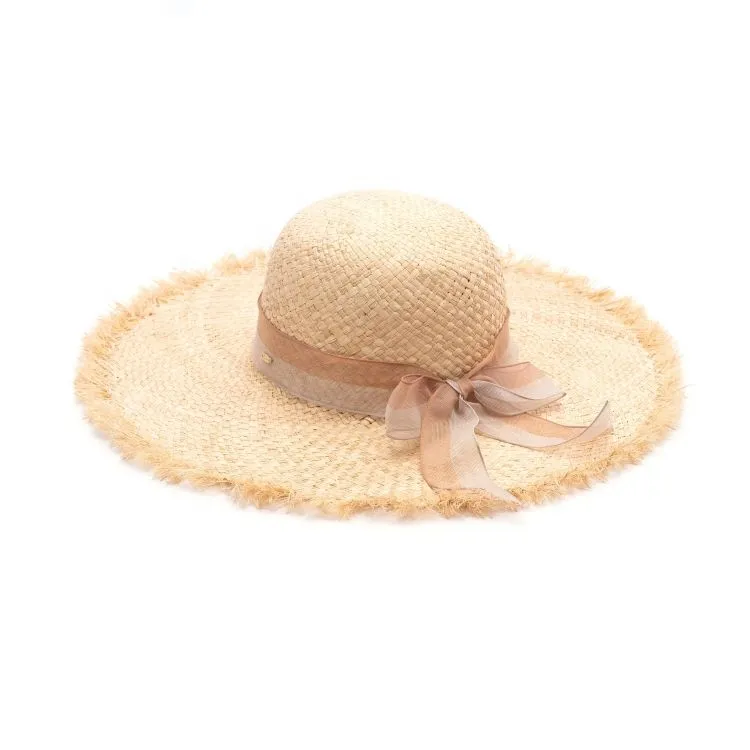
The heart of Raffia grass is the most expensive, rarest raw material for straw products.
This is the material to make the lifeguard straw hat, the hottest selling straw hat on Amazon.
Distributed around the globe, the ancient name "Lingrass," a multi-year herbaceous plant, belongs to the lamp core grass family, underground rhizome cross-walking, there are slender and densely grown roots. Stem rounded, thin upper and lower thickness, tufted, 100-150 cm high. Weeds are cold resistant, -6 ~ 7 ° C will not freeze to death, afraid of high temperature, 35 ° C growth stagnation, 20 ° C is optimal for growth.
Stem erect, single, cylindrical, clueless, leaves degenerate, stem filled with the white medulla, tough and resilient.
In addition to weaving mats, it also can be used to weave straw caps, fans, grass baskets, carpets, sandals, grass boxes, etc. Harvesting usually takes place from mid-June to mid-July.
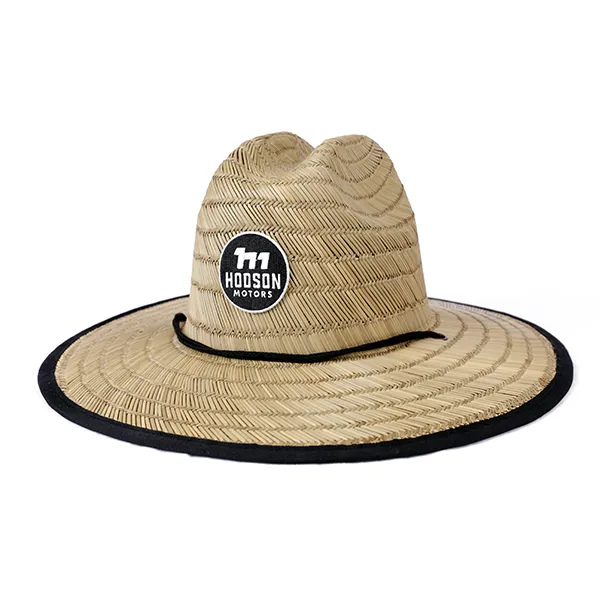
Its white and tender parts of the prostrate stem and the young parts of the tip of the underground prostrate stem (grass bud) are edible; the old mature runners and shortened stems can be cooked or fed; its male pollen is commonly known as "Puhuang" and has a medicinal and tonic function. It's an important raw material for paper-making and artificial cotton, also can be used to weave bushes, cushions, etc.
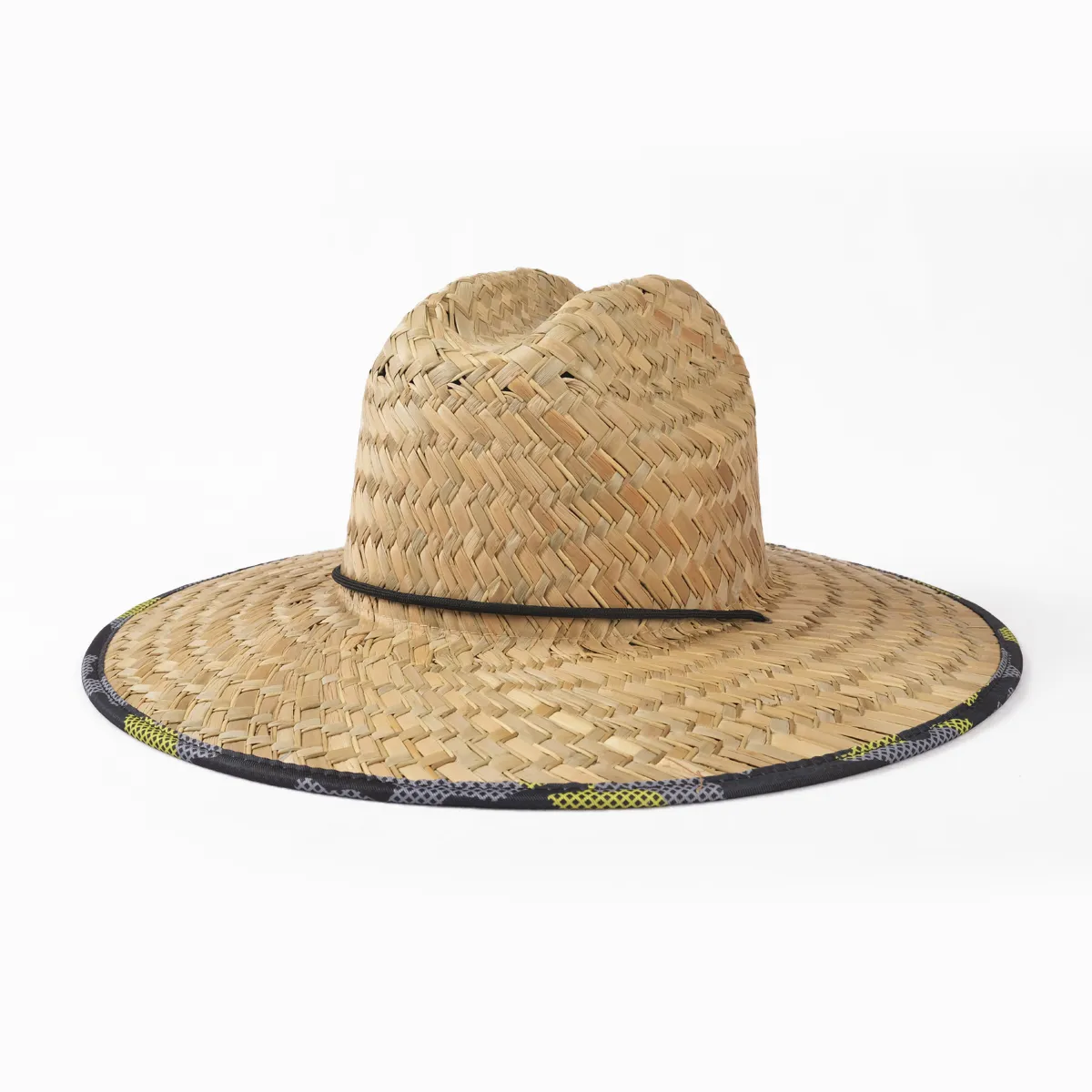
The primary material for a custom lifeguard straw hat.
A perennial herbaceous plant with a short subterminal stem, Portuguese-dyed, stalk tufted erect, cylindrical, solid, brown base of the stem, degenerate scaly sheath leaves, spike-shaped inflorescence, apex, stalk-shaped, base bracts extended, stem-shaped, two under flowers ochreous, ochreous or elliptical, seed yellow obovate-ochreous, humid, cold-resistant, drought-resistant.
The soil conditions are not strict, but it is advisable to choose a moist, fertile, and loose cultivation. "Heart grass is also a medicinal plant. Its stem marrow or whole herb has the effect of cleaning heat and wetting water. It can treat gonorrhea, tension, restlessness, throat paralysis, trauma, and so on.
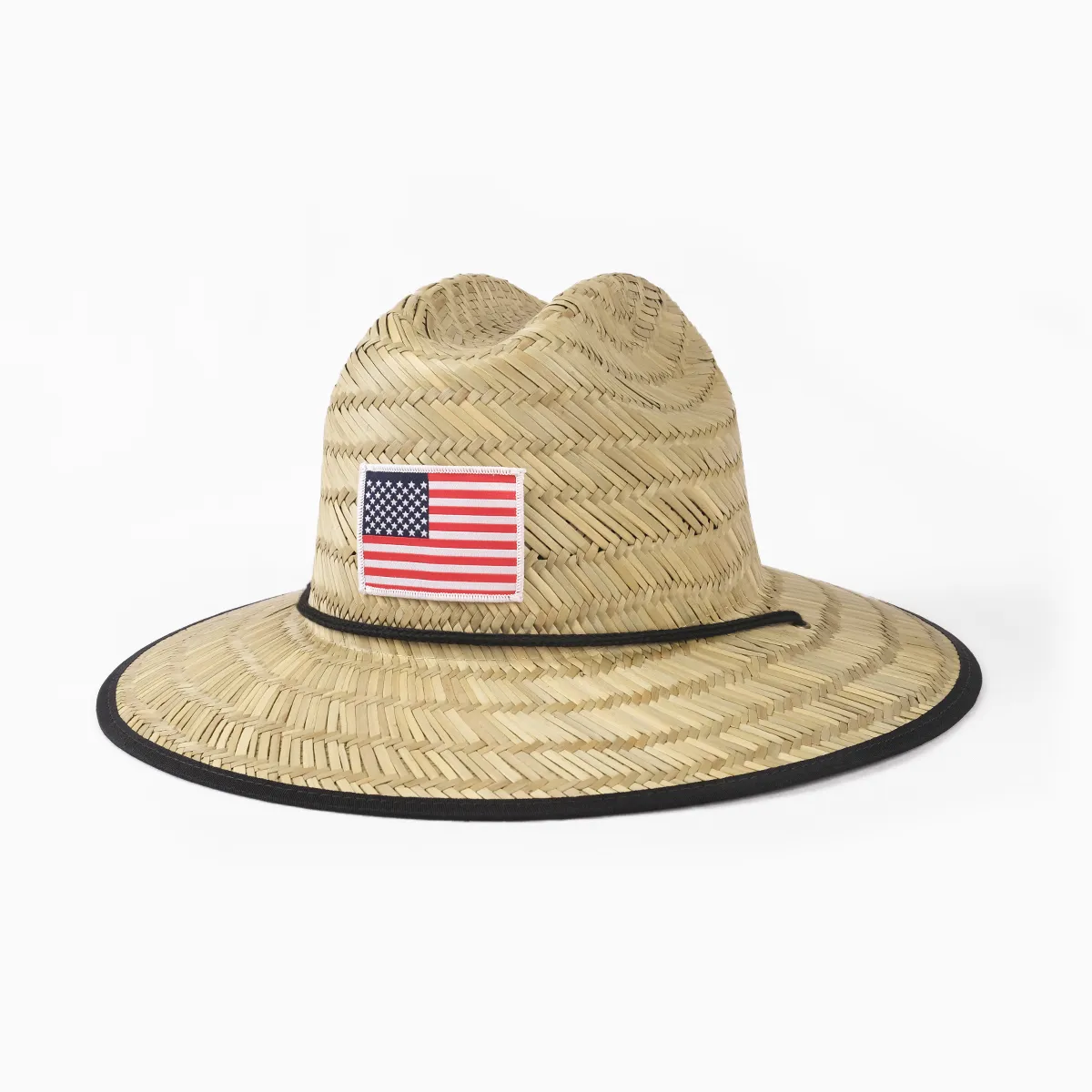
A semi-shrub plant in the legume family. Up to 90 cm. The branch is covered with tinkly hairs. Leaf 9-11, ellipse round, obovate or obovate with a circle, 1-2.5 cm long, apex or slightly concave, base round wedge, petiole.
The leaf axils and leaves are dimmed on both sides. Inflorescence 3-10 cm long; corolla pale red or purple red. Fruit stick shape, 1-3 cm long, densely dimmed when young. Flowering Time is May. Fruit time is from September to October.
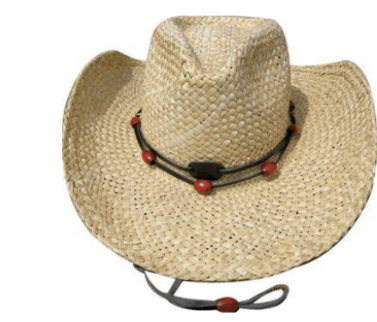
Hand-woven Cowboy Hat
expensive and stainable.
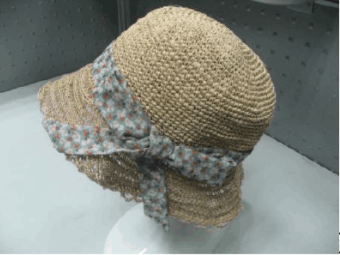
white, soft, well-braided straw hats are bright, beautiful, and elegant.
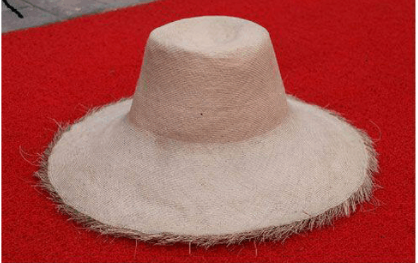
Seagrasses are the only flowering plants growing in marine environments. There are about 60 species of fully marine seagrasses
which belong to four families, all in the order Alismatales.
Of the 60 species of seagrass found worldwide, seven grow in Florida waters. In the Florida Keys, turtle grass, manatee grass, and shoal grass are the most common types of seagrass. An estimated 2.7 million acres of seagrass meadows grow along Florida's extensive coastline, protected bays and lagoons.
Sisal, (Agave sisalana) , plant of the family Asparagaceae and its fibre, the most important of the leaf fiber group. The plant is native to Central America, where its fibre has been used since pre-Columbian times.
Commercial interest in sisal was stimulated by the development of the machine grain binder in the 1880s, which brought a demand for low-cost twine, and plantings were soon established in the Bahamas and Tanganyika (now Tanzania).
Since the first use of Shantung (aka Shantung Panama) to make hats, the material remains widely a mystery. Many people believe that shantung hats are made of natural straw. A fabric made out of a high-performance paper rolled into a yarn to imitate straw.
Although, for the size papers made from Kozo, Gampi and Mitsumata, rice starch was traditionally used. Kozo, Gampi and Mitsumata were originally used to make the high performance paper.
The lead straw in manufacturers, man-made straw, durable and great for sun protection. Layered horizontally and woven into the shape of the hat.
Modern day Milan straws draw cynical eyes for lack of their natural rustic authenticity. Now Milan straw actually refers to the weaving/braiding technique, not the material. Despite its thick braids, the Milan Straw hats are durable and light in weight. Its elegant appearance spells style statement on the streets for many fashion enthusiasts.
Palm leaf straw is hand braided tightly, then sewn by overlapping the braids. More overlaps per inch create smoother, more durable, water repellent, and sun protective hats. Seagrasses grow in coastal, saline environments. A variety of species are used intheir natural yellowish, brownish hues. They are loosely woven into hats.
Paper cloth is made of paper, pp, gold and silver thread, and other materials.
It has many materials and patterns, like single-knot straw cloth, retro and environmentally friendly paper cloth, gold light cloth, gold silk cloth, silver wire cloth, gold wire cloth, washing cloth, striped and coated paper cloth, etc.
Paper cloth can be made waterproof, moisture-proof, and mildew-proof treatment. Also, it can be mass-produced, which leads to the relative price of its headwear. Paper cloth can be cut, made into once molded hat top, once molded hat, etc.
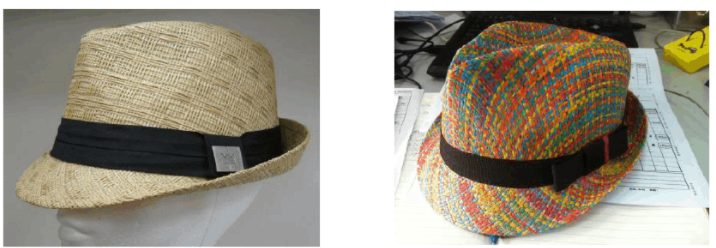
22g/m2, width as 0.6cm, 0.8cm, 1cm. 1.2cm, 1.5cm, 2cm etc.
Taiwan paper braid, 18g/m2, raw material a bit expensive, AD12 use Taiwan paper + domestic braid, AD10 use Japanese paper + Taiwan braid.
Plastic wine, cotton thread, golden thread, and yarn can be added to the paper braid. We usually use this to produce floppy straw hats.
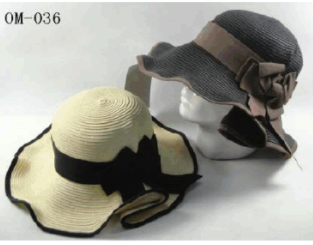
Paper-braided Bucket
The rope is made by machine or human, and paper rope straw hat can be hand braided or hand knitted.
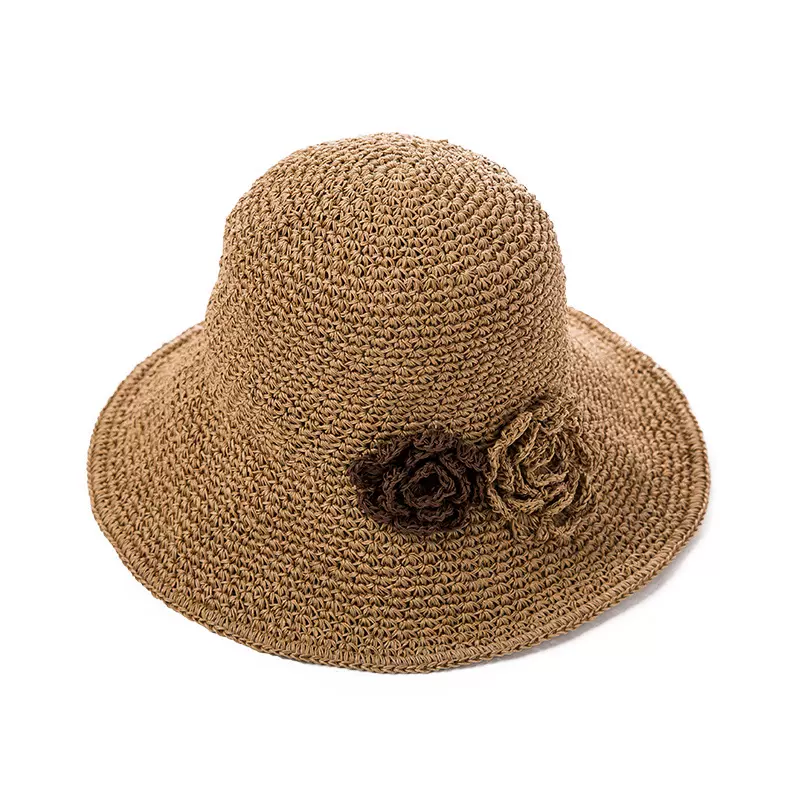
The thinner the rope, the higher the price. Machine-woven monofilament + shaped yarn can be used to make hats or bucket hats etc.

Third of Grass, too thin, a bit expensive
A fifth of Grass, 3mm
Eighth of Grass, price differs according to embryo and pattern

Scientific name: Agave sisalana Per r. Ex Engelm.
It is also known as pineapple fiber, is a perennial tropical hard-leaf fiber crop of the family Araceae, native to Mexico and now mainly cultivated in Africa, Latin America, Asia, and other places, the largest and most widely used hard fiber in the world today.
Sisal fibers are tough in texture, wear-resistant, salt-alkali-resistant, and corrosion-resistant, widely used in transportation, fishery, petroleum, metallurgy, and other industries, and have important economic value.
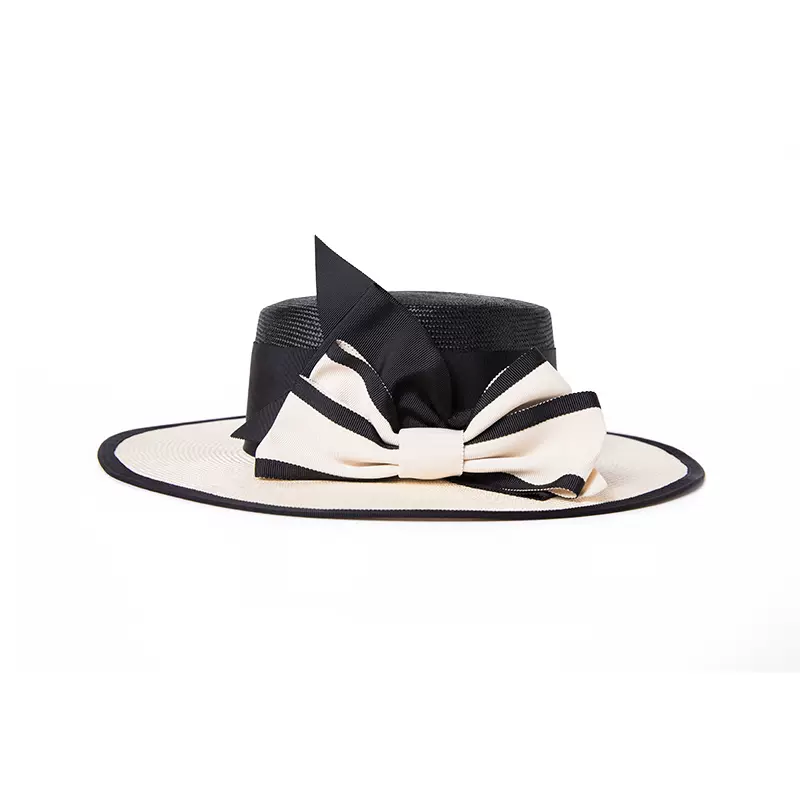
Native to the Philippines, widely grown on Borneo and Sumatra. The outermost, oldest petiole produces the strongest fibers and the darkest colors. Up to 0.9-2.7 meters long, solid, buoyant, used for roping, paper, carpeting, etc., of the family Musaceae (Musaceae).
Made by twisting of linen, not as smooth as chemical fiber or cotton, with vivid concave texture. Artist often makes use of their material beauty. In addition to synthetic fiber, linen is the strongest of all textiles. Also, this fabric has high fiber strength, is difficult to be torn or punctured, and can be scraped and pressed by a palette knife freely.
polyester, cotton, lurex, etc.
plain weave, lace, fabric, etc.
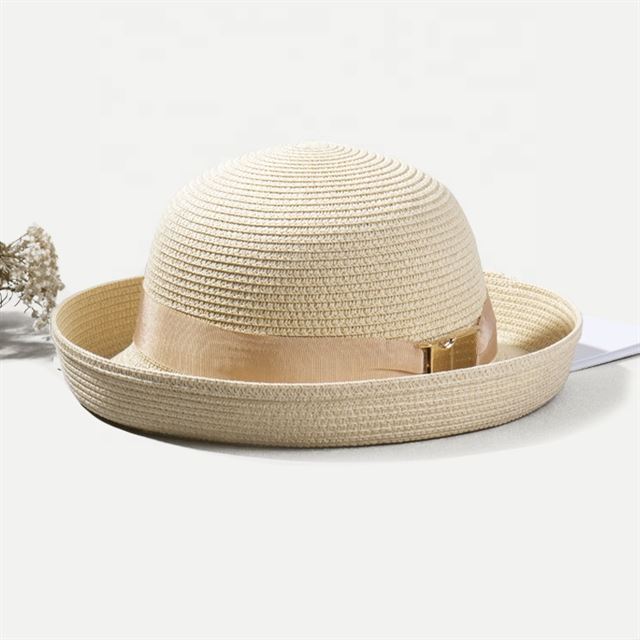
Yaffe, also known as Japanese grass, raffia, or fiber grass. It is made of cotton fiber or wood fiber as raw material, using high-tech and foreign advanced equipment for spinning, a global exclusive patent product, mainly used in European and American markets, and a high-end green material for footwear and gift packaging.
Anti-static, washable, high color fastness, strong breathability, and good flexibility.
Product specification:600D/1F/SD/RW、1100D/1F/SD/RW、1100D/1F/BR/RW
Application: Artworks like braided caps, bags, artificial flowers, handicrafts flowers.
Decorations like high-end interior decorative wallpaper, wall hangs, cushions, cup cushions, and various flowers and plants.
Footwear like high-end casual upper parts, embroidery, and all kinds of straw-woven casual shoes.
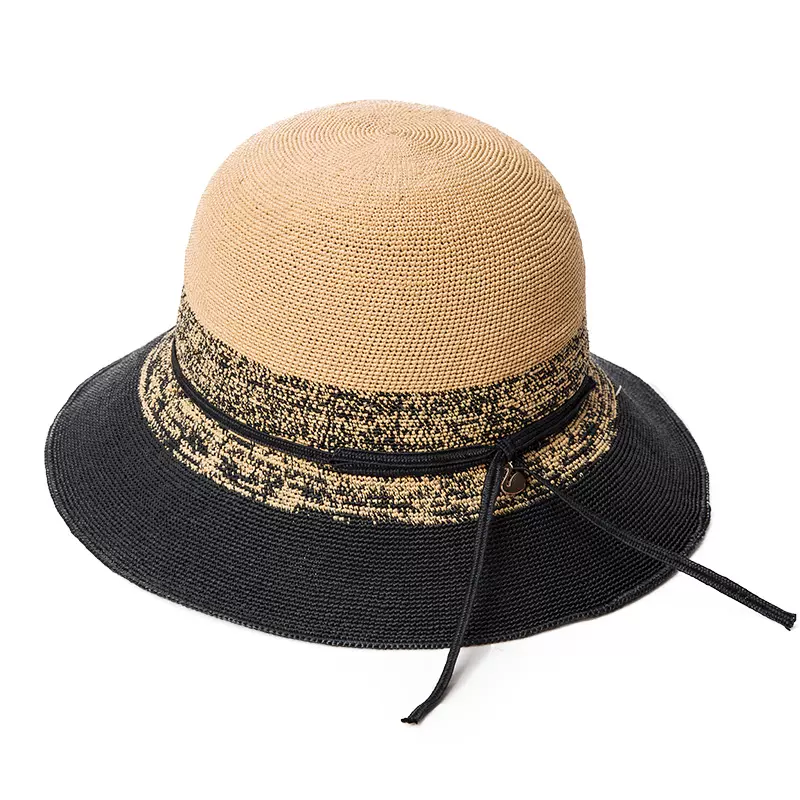
PP plastic is actually polypropylene, and polypropylene is a polymer formed by the addition polymerization of propylene, an organic substance, and is a white waxy material with a transparent and light appearance.
Low density, non-toxic and colorless, no odor, corrosion resistance, and good heat resistance.
Good PP is generally transparent or translucent, shiny appearance has a beautiful design, and has no burrs.
Any new material, let me know.